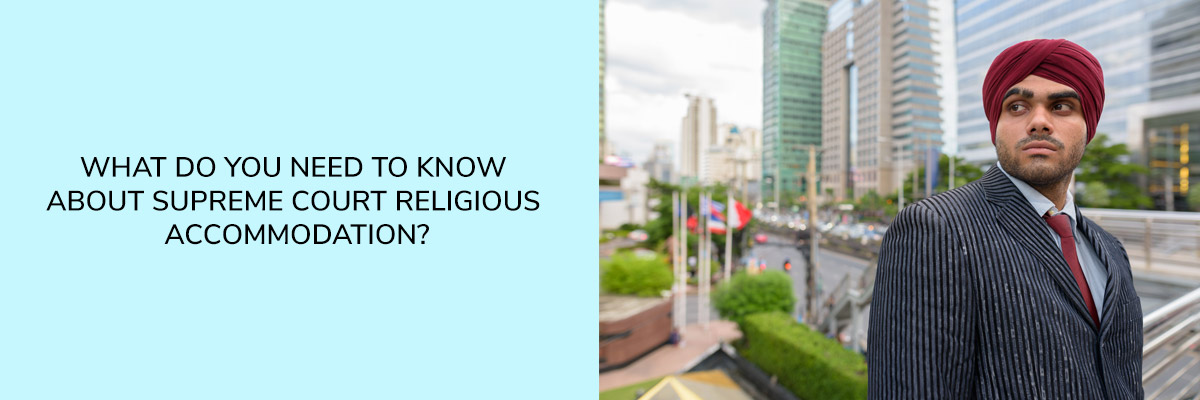In the United States, religious freedom has always been regarded as an essential and indispensable right. It is enshrined in the First Amendment of the Constitution, which protects the free exercise of religion.
Over the years, the Supreme Court has played a crucial role in interpreting and shaping the boundaries of religious freedom. One important aspect of this is religious accommodation, which involves balancing an individual’s religious beliefs and practices with the requirements of laws and regulations.
Note: It is illegal to discriminate against anyone on the basis of race, religion, color, disability, etc.
In this blog, we will delve into the key aspects of Supreme Court religious accommodation and its implications for individuals and society.
- The Free Exercise Clause
According to the First Amendment’s free exercise clause, “Congress shall make no law respecting an establishment of religion, or prohibiting the free exercise thereof.” This clause is the foundation of religious freedom in the US and it makes sure that the government fulfills its obligation and accommodates religious practices.
- Balancing Act
One of the key challenges the Supreme Court faces is balancing religious freedom with the requirement for the government to enforce fair, broadly applicable laws. In other words, even while religious liberty is essential, it cannot be a complete immunity from the law. The Court has devised a framework for assessing requests for religious accommodation, which frequently involves determining whether a statute significantly restricts someone’s religious practices or beliefs.
- The Sherbert Test
The standard for assessing claims of religious accommodation was established by the Sherbert Test, which was developed in the 1963 case of Sherbert v. Verner. According to this test, the government had to demonstrate a compelling interest in upholding the law and demonstrate that it was the least restrictive way to accomplish that purpose if a person could show that it substantially hindered their sincere religious convictions. This standard significantly increased the burden on the government to defend legislation that restricts religious practices.
- The Smith Decision
In the Employment Division v. Smith case from 1990, the Supreme Court changed the requirements for religious accommodation. The Supreme Court found that as long as legislation was not directly targeting religious beliefs, it might be enforced even if it interfered with religious practices. This ruling dramatically constrained claims for religious accommodation.
- The Religious Freedom Restoration Act (RFRA)
The Religious Freedom Restoration Act was passed by Congress in 1993 in response to the Smith ruling. The Sherbert Test-like harsher criteria, reintroduced by RFRA, will be used to assess claims of religious accommodation. When interfering with religious practices, the government had to demonstrate a compelling reason for doing so and utilize the least restrictive methods possible.
- Hobby Lobby and the Expansion of RFRA
The Supreme Court expanded the application of the Religious Freedom Restoration Act (RFRA) in the 2014 case of Burwell v. Hobby Lobby by holding that closely held businesses could request religious exemptions from laws like the Affordable Care Act’s contraception requirement. In light of this ruling, concerns have been expressed concerning the potential extension of the right to religious accommodation to non-believers as a whole.
- Ongoing Debates
Cases involving religious accommodation are still a topic of discussion and litigation in the US. Religious restrictions on giving services to same-sex couples and religious exemptions from vaccination requirements have also come up in recent cases. The Court must balance the significance of religious liberty with the interests of the government in public health, anti-discrimination, and other pressing issues.
Conclusion:
Supreme Court decisions on religious accommodation have a profound impact on the balance between religious freedom and government regulation in the United States. While the Court has evolved its interpretation over time, the tension between religious liberty and societal interests remains an ongoing challenge. As these cases continue to shape the legal landscape, it is crucial to stay informed about the nuances and implications of Supreme Court decisions on religious accommodation to better understand the state of religious freedom in the country.


